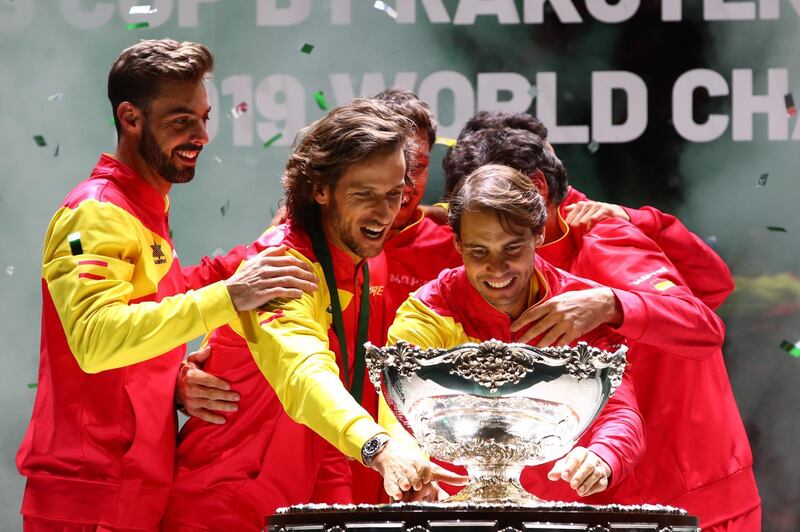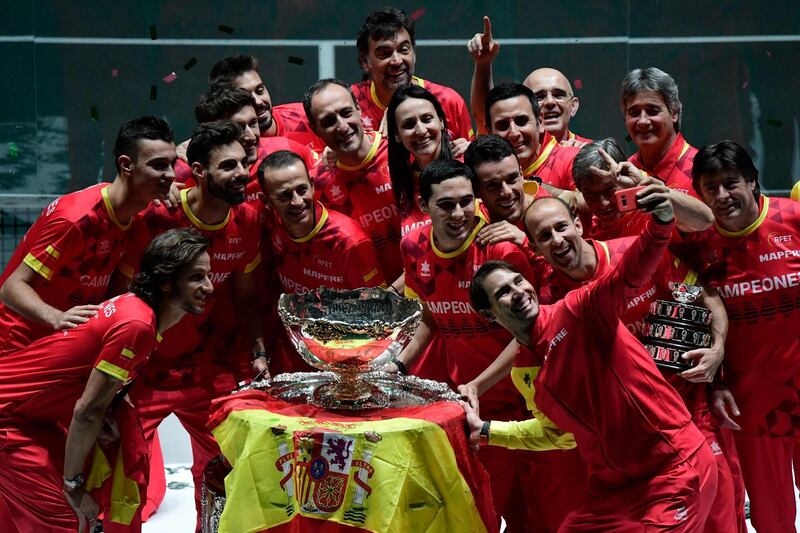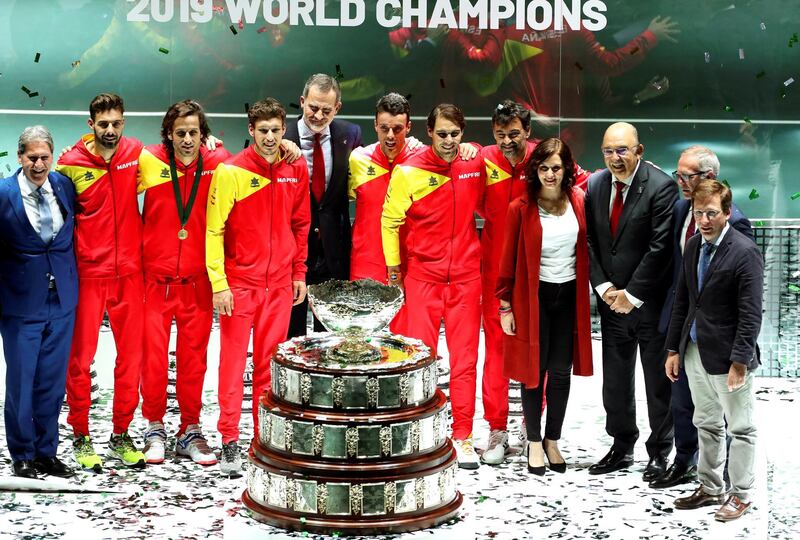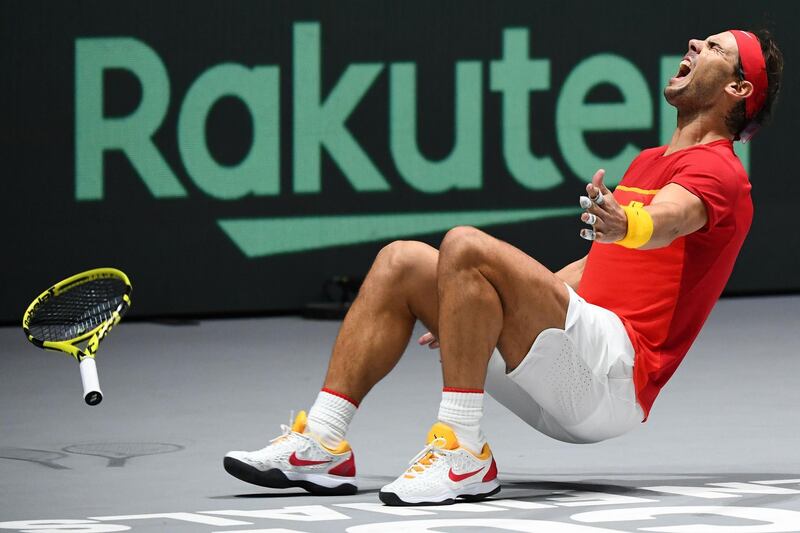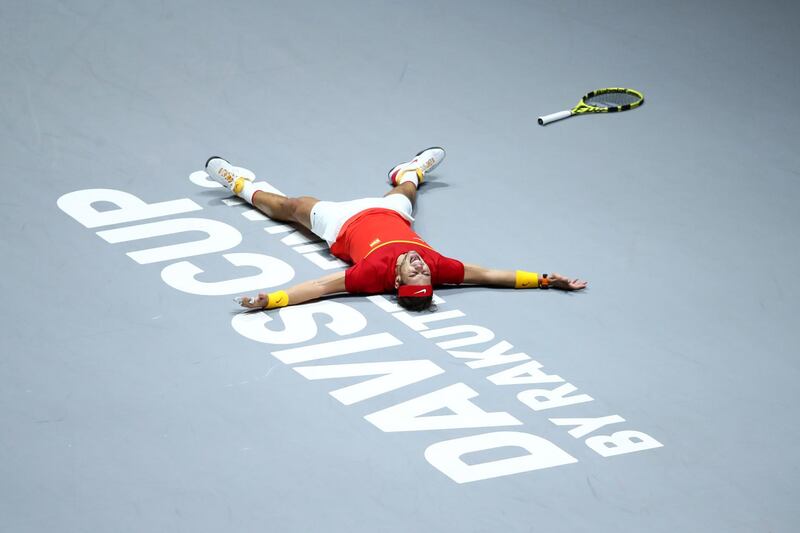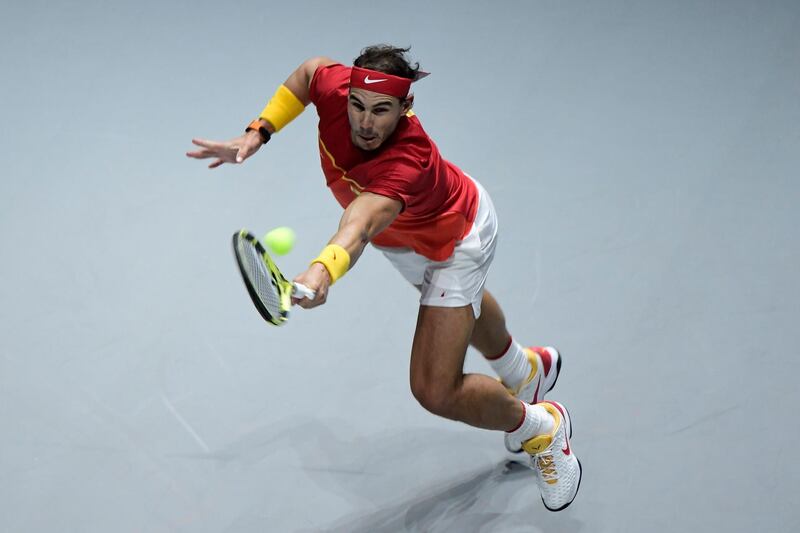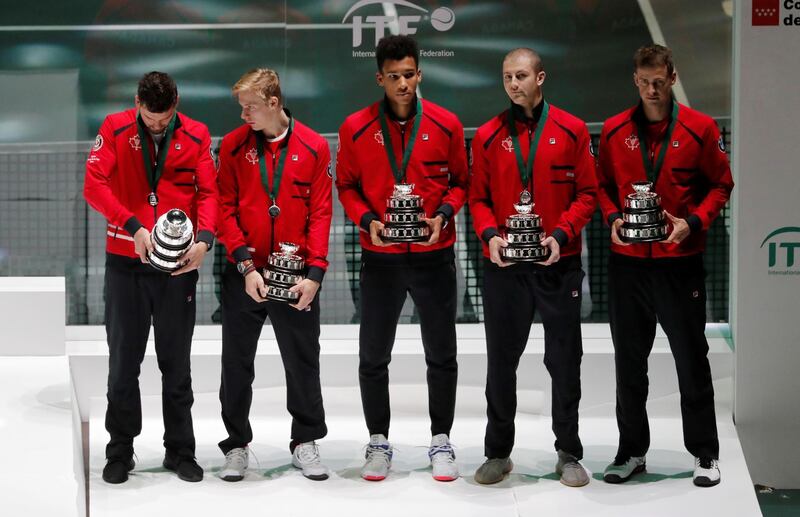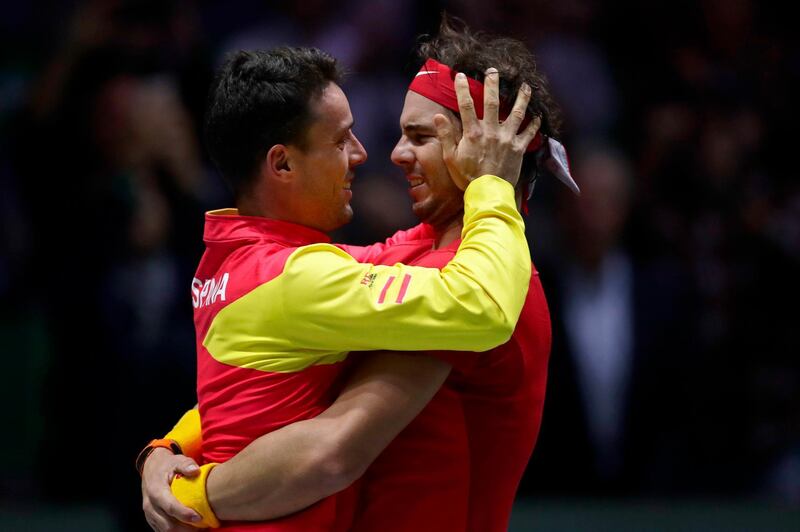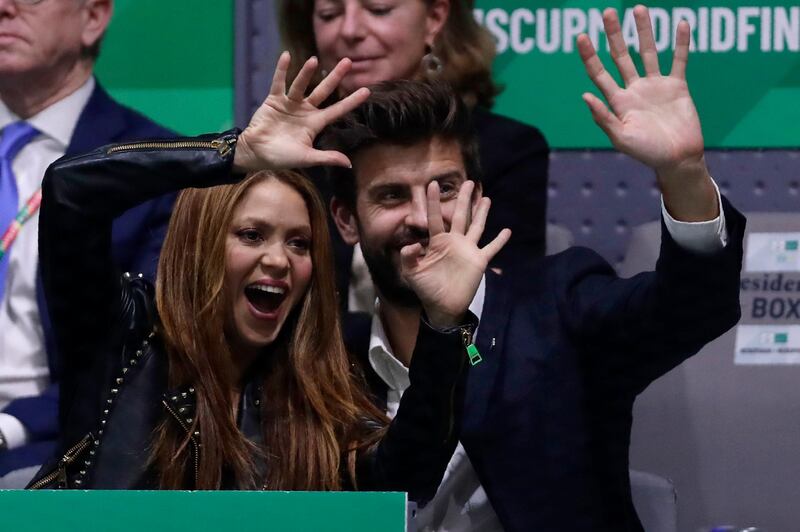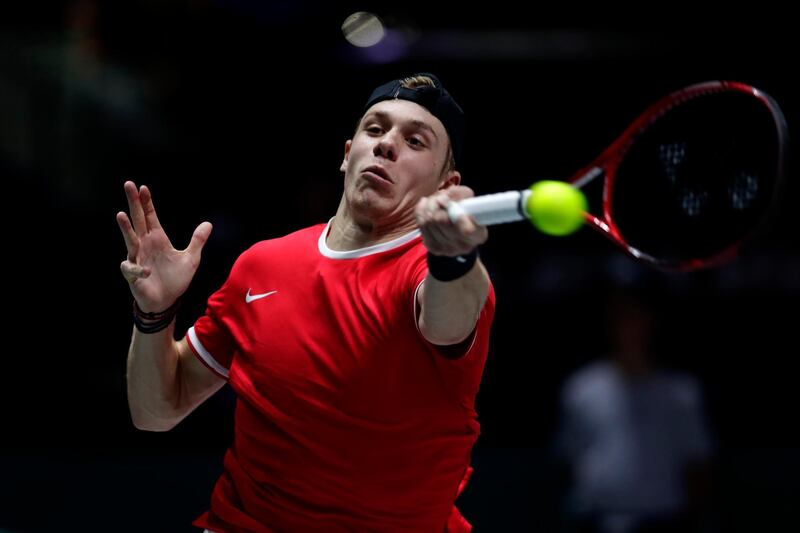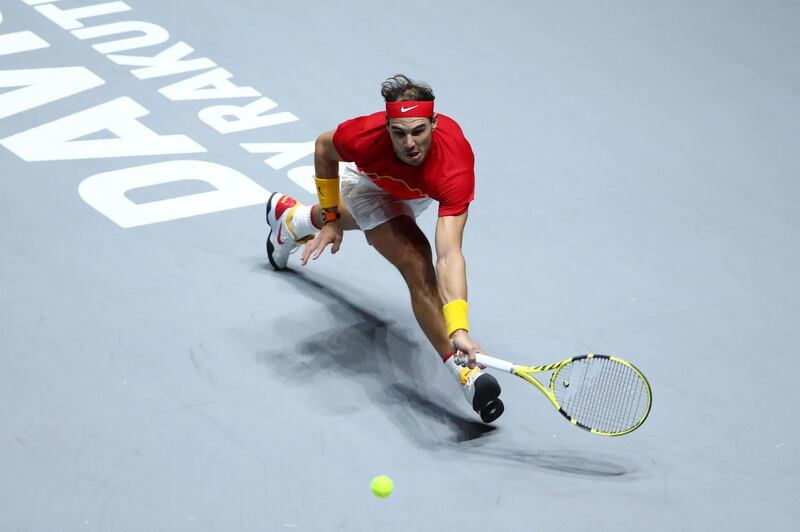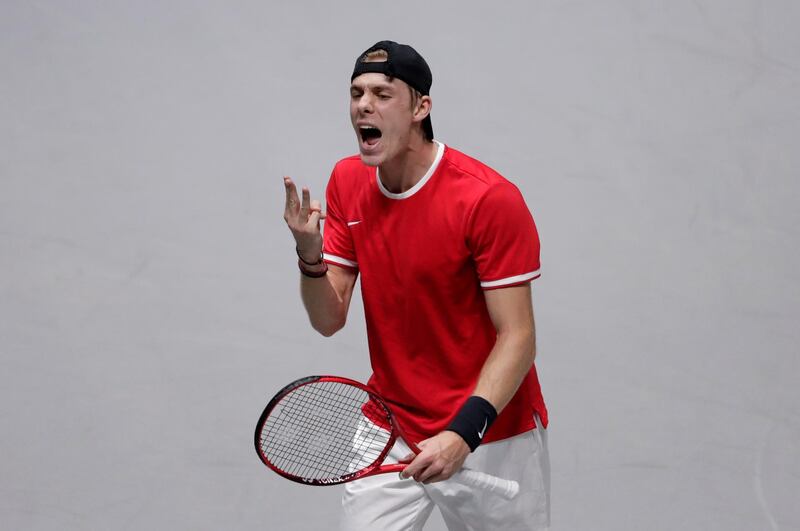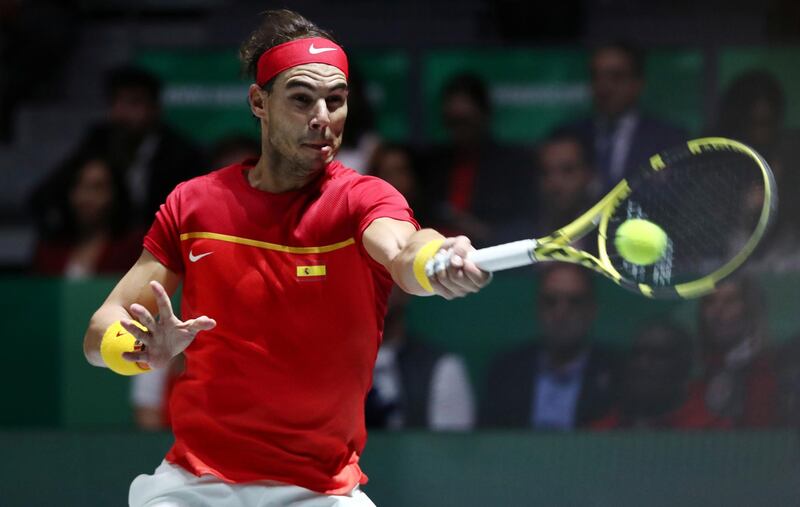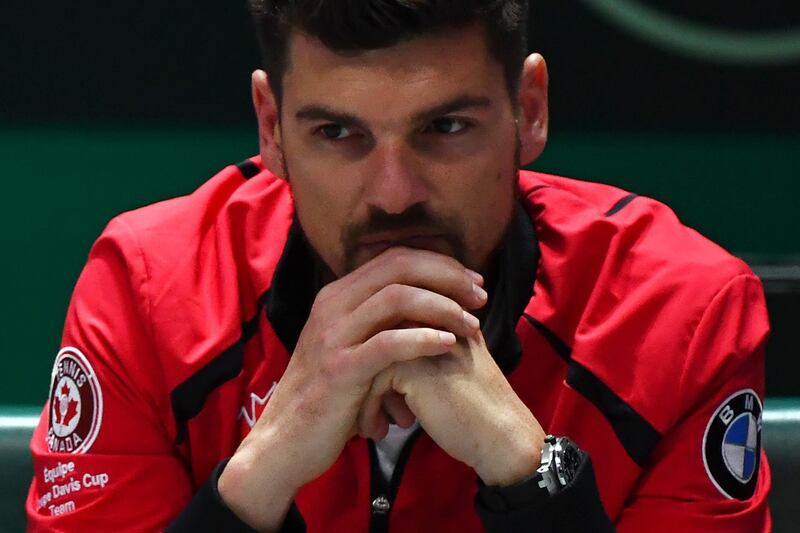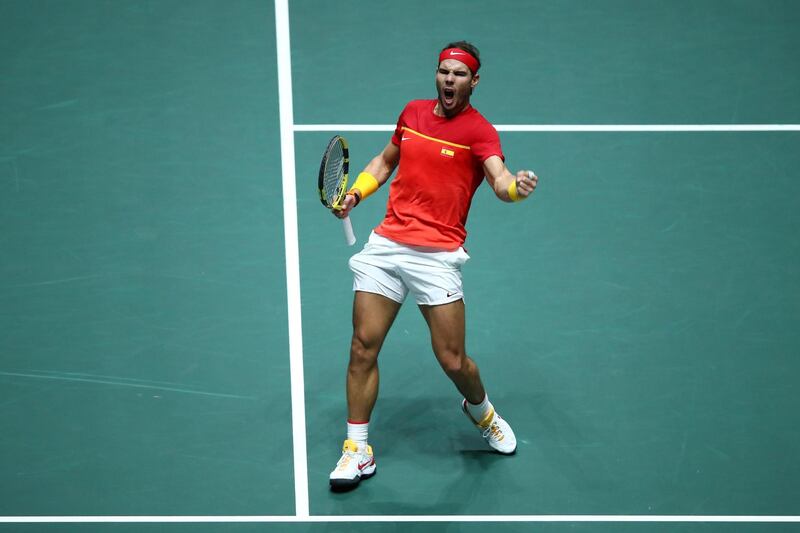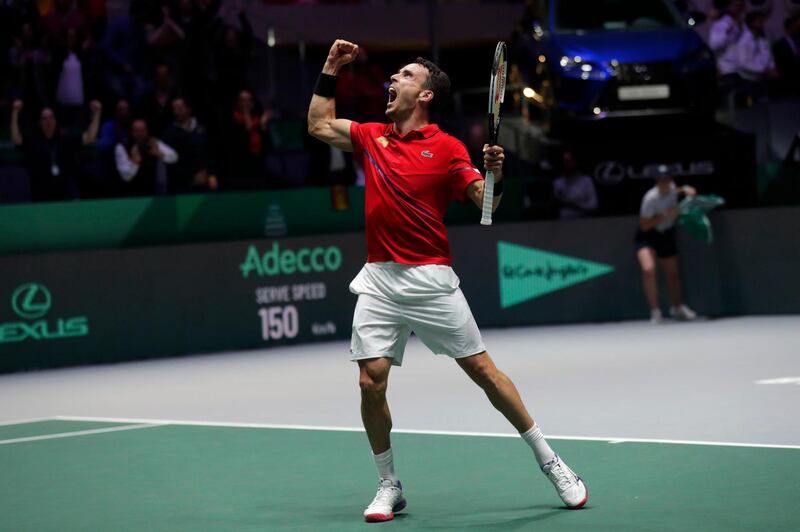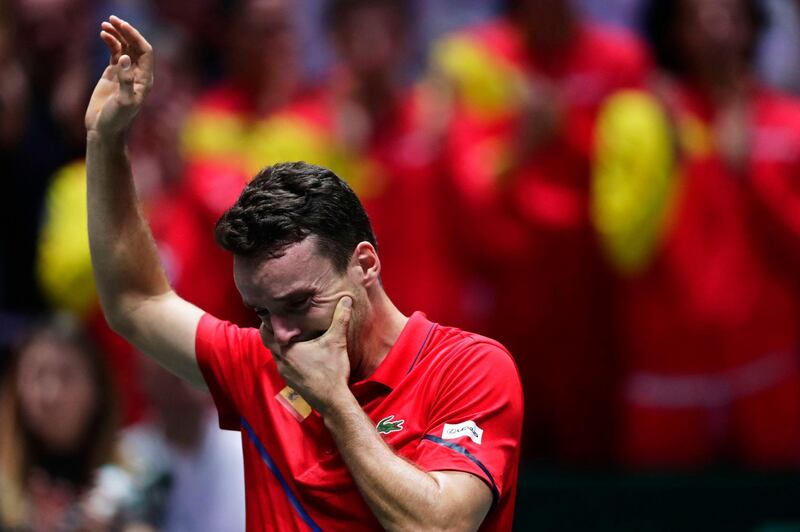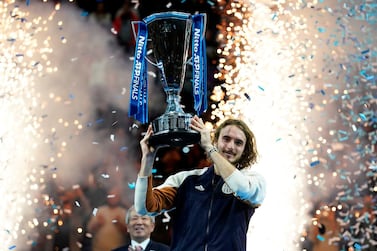For an event that had been heavily criticised months before it even started, the Davis Cup Madrid Finals probably proved many of its detractors wrong.
The revamped version of the 119-year-old team event debuted in the Spanish capital and saw 18 nations come together for a seven-day tournament at the Caja Magica that concluded with a victory for a Rafael Nadal-led Spain over Canada on Sunday.
Having spent 12 days in Madrid following team practice sessions, talking to players and captains, and taking in the tennis action unfolding across the three stadiums at ‘The Magic Box’, I’d use two words to describe year one of the Davis Cup Finals: ‘intense’ and ‘emotional’. If you give me another three, I’d probably say it’s also a ‘work in progress’.
Everything about this new format is intense. You have a group stage that is played over four days, followed by a knockout stage of quarter-finals, semis and final.
A tie between two nations consists of two singles matches and one doubles, all played back-to-back in a single day, as opposed to the five-match ties contested over three days in the previous format. Matches are played best-of-three, not best-of-five, and the surface in Madrid was a relatively fast indoor hard court.
Teams were split into six groups of three, with the group winners securing direct passage to the quarter-finals, along with the two best-placed runners-up.
To win the Davis Cup title, Spain played five ties in six days, and needed every player on their five-man roster to pull it off.
During his first post-match press conference after he defeated Karen Khachanov to level the tie for the Spaniards against Russia, Nadal was visibly stressed and couldn’t keep his eyes off a screen in the corner of the room that was showing the doubles decider.
“Honestly, the format makes things very difficult because every mistake puts you in a position that you don't want to be in. And losing that first match, we were under pressure with the rest of the groups,” said Nadal, who had to carry Spain from a losing position in three separate ties throughout the week.
That added tension pretty much guaranteed that every tie featured some real nail-biters; the quality of tennis and competitiveness of each match was off the charts.
The high-intensity, long consecutive days proved quite challenging for the players though and Great Britain captain Leon Smith is hoping organisers can find a way to improve scheduling for next year’s edition.
The moment Spain became World Champions 🏆@RafaelNadal #CANESP #DavisCupMadridFinals #byRakuten pic.twitter.com/Y0SWUpqVDL
— Davis Cup (@DavisCup) November 24, 2019
“It's an advantage to have a day's grace somewhere,” said Smith, whose GB side played four days in a row before falling to Spain in the semi-finals.
Scheduling will obviously need to be addressed, and not just to try and give teams a day off, but more importantly to avoid late-night finishes like the many ones we had throughout the week (USA-Italy ended at 4.04am). But it was nice to watch a Davis Cup where it felt like every single point mattered. The stakes were high and the players fought accordingly.
One of the main reasons reforms were introduced to Davis Cup was to attract the top players back to the competition, and that target was mostly achieved. Five of the world’s top-10 came to Madrid and 11 of the top-20.
The players didn’t just attend, they played their hearts out. Serbia’s tearful press conference following their quarter-final defeat to Russia said it all. I’d never witnessed such raw emotion from a group of players as I did that day.
From Viktor Troicki’s guilt-ridden apology to his team-mates, to captain Nenad Zimonjic’s tearful statements about brotherhood and the retiring Janko Tipsarevic, to Filip Krajinovic just silently crying from start to end.
— Davis Cup (@DavisCup) November 24, 2019
Novak Djokovic had half his face covered by his cap and could barely look up to answer any questions. After finishing his press duties, the world No 2 lay down on the ground on his back, looking utterly depleted as he waited for his team-mates to finish their one-on-one interviews.
The Davis Cup may have dramatically changed but the players showed they care about it just the same.
It also felt that the younger players, who are less attached to the previous format, were generally happy with the new event while others, like the 36-year-old Philipp Kohlschreiber admitted he “missed a lot of these special feelings” of playing in front of a home crowd.
“We still play all for Germany,” he added. “This is always very special. It doesn't matter, you can put us, I don't know, on the dark side of the moon and we're going to play there for Germany.”
Attendance greatly varied across the three stadiums, depending on the tie. While hosts Spain obviously attracted sell-out crowds and nations like Argentina, Kazakhstan, Canada and Serbia received lots of support from traveling fans, some match-ups were played in front of relatively empty stands.
Pure passion from @BautistaAgut 🤗#CANESP #DavisCupMadridFinals #byRakuten pic.twitter.com/HIFbVfsoDH
— Davis Cup (@DavisCup) November 24, 2019
One of the things organisers got right was the set-up of the whole venue. The dedicated area of personalised locker rooms created for each team looked like a mini Olympic Village, and was a big hit with the players.
From a spectator’s perspective, the Davis Cup Finals had high entertainment value. A nice added element was the fact that doubles matches decided many of the ties, which prompted several singles stars – like Nadal, Djokovic, Rublev, Khachanov and others – to take part. Dare I say that doubles star Nadal is even more exciting than singles star Nadal?
Nadal branded the tournament “a success”, and said he predicts a “great future” for it, but there are some serious challenges ahead. Finding a better slot for the Finals will be a top priority for organisers, so it is not so late in the season, and more importantly, finding a bigger window because seven days is tough.
Other items on the organisers’ agenda for next year should include: Attracting more fans to the venue, selling TV rights deals to wider audiences, improving online streaming and live scoring, and looking at the rules to avoid having doubles dead rubbers.
